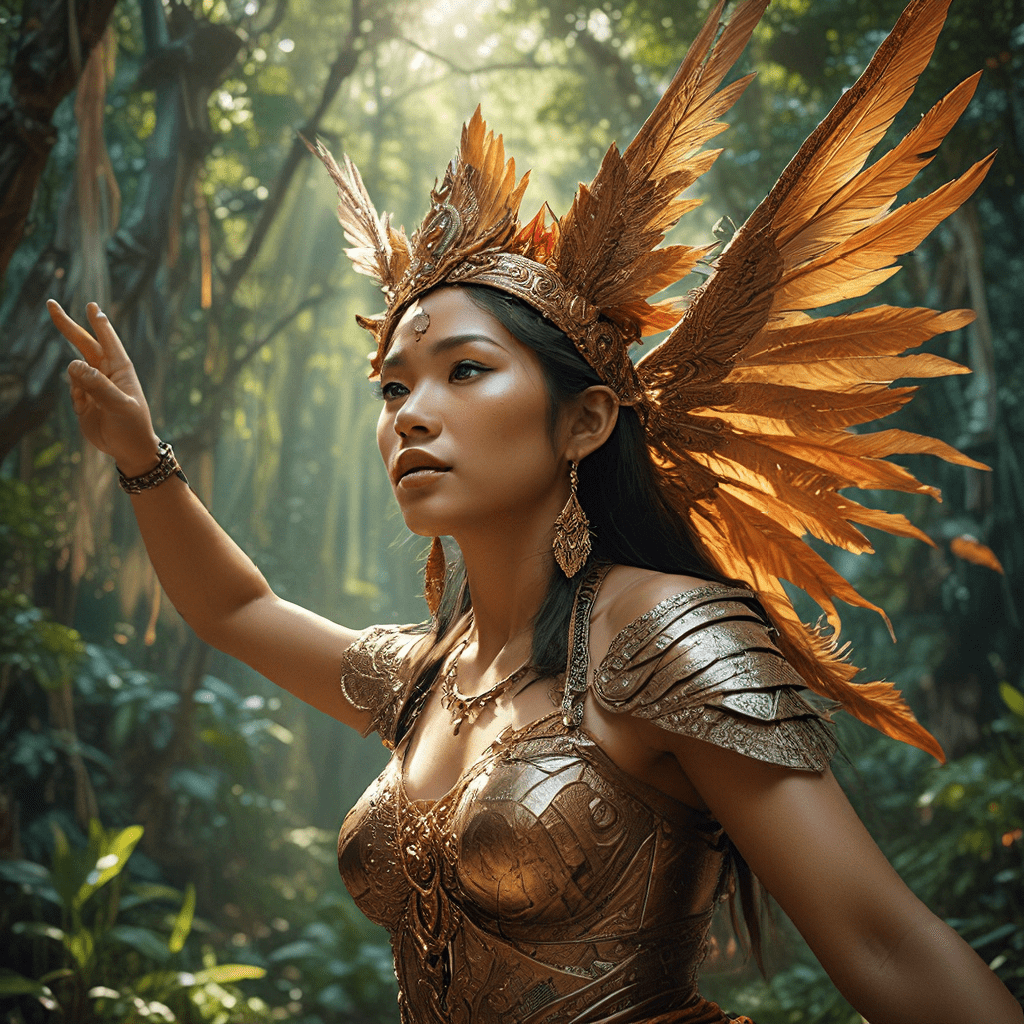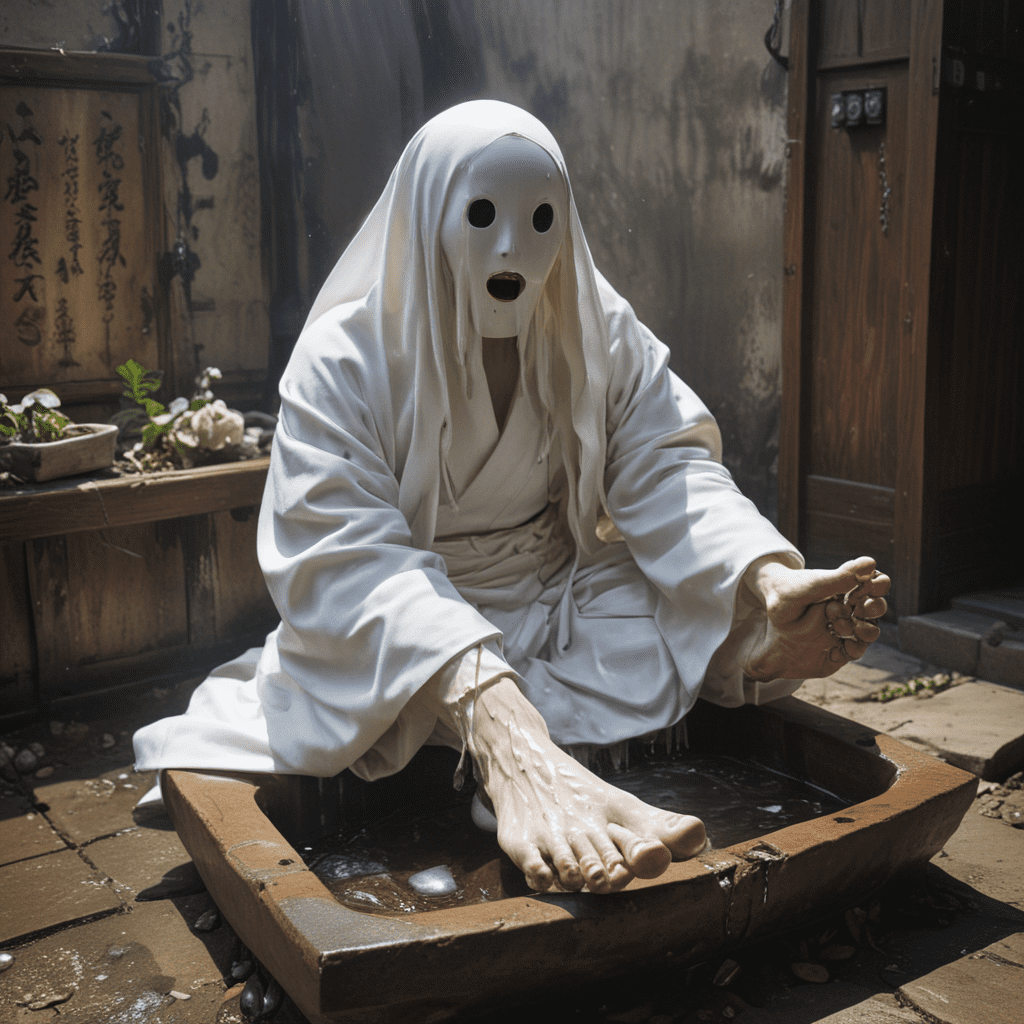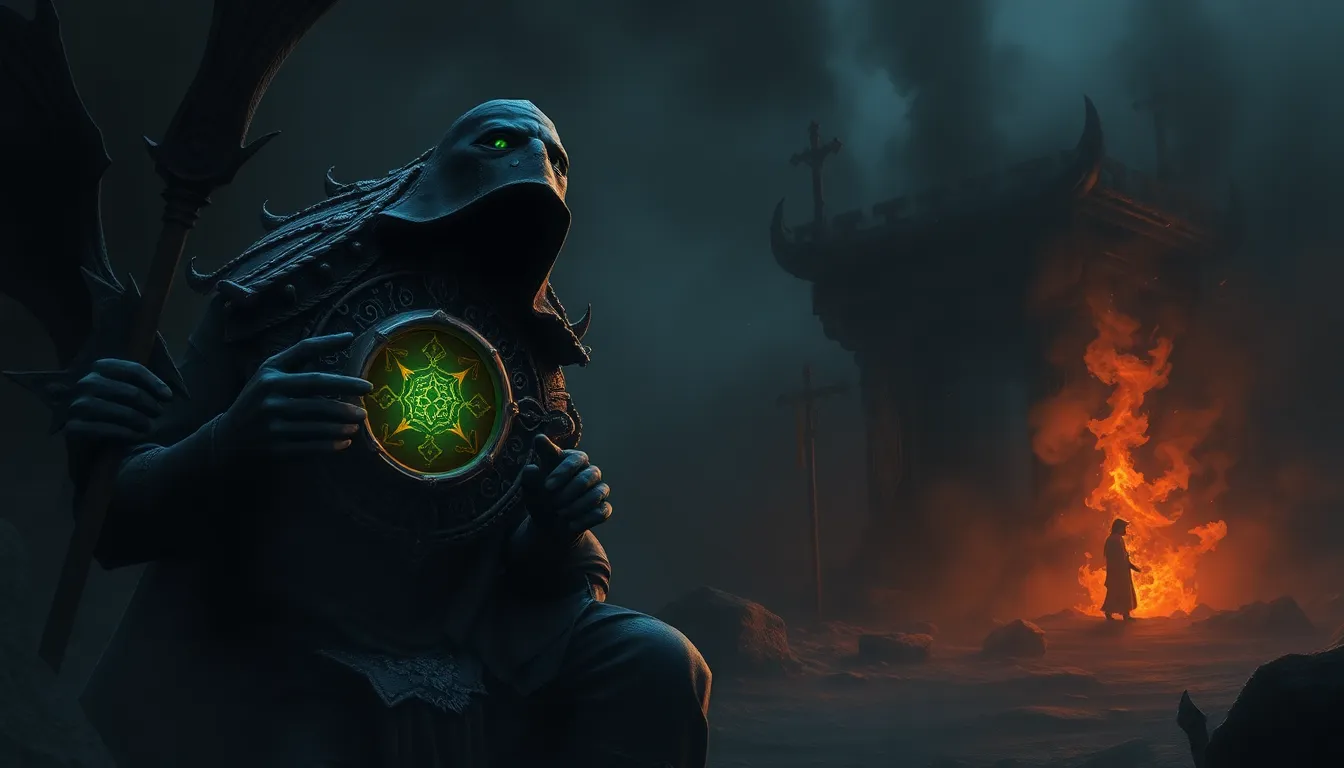Filipino Folklore: The Power of Mythical Creatures
A Tapestry of Mythical Beings: Exploring the Diverse Filipino Mythological Landscape
The Philippines, a vibrant archipelago in Southeast Asia, boasts a rich tapestry of mythical creatures that have shaped its folklore and cultural identity for centuries. This diverse mythological landscape reflects the country's unique history, geography, and indigenous beliefs. Filipinos from different regions have developed distinct tales and legends populated by fascinating beings, each with its own unique characteristics, powers, and roles in the stories. These creatures are more than just figments of imagination; they embody the hopes, fears, and values of the Filipino people.
From the mischievous Tikbalang, a creature with the head of a horse and a human body, to the terrifying Aswang, a shapeshifting vampire-like entity, Filipino mythology brims with a captivating cast of characters that have captured the imagination of generations. These creatures serve as a window into the cultural consciousness of the Filipino people, offering a glimpse into their beliefs about the natural world, the supernatural realm, and the human condition.
The Role of Mythical Creatures in Shaping Filipino Culture and Values
Mythical creatures play a crucial role in shaping Filipino culture and values, acting as powerful symbols that convey important lessons and moral principles. Their presence in folklore helps to solidify a sense of shared identity and cultural heritage among Filipinos. These creatures are woven into the fabric of everyday life, often serving as cautionary tales, moral compasses, and reminders of the importance of respect, tradition, and community.
For example, the Tikbalang, known for its trickery and mischievous nature, serves as a reminder to Filipinos to be wary of deceitful individuals and the dangers of arrogance. The Aswang, on the other hand, represents the fear of the unknown and the dangers that lurk in the shadows, emphasizing the importance of vigilance and community protection. Through these stories, Filipinos learn about the importance of respect for elders, the value of perseverance, and the dangers of greed and deceit, ensuring that these values remain embedded in their cultural consciousness.
The Kapre, the Tikbalang, and the Aswang: Iconic Mythical Creatures in Filipino Folklore
Among the most iconic mythical creatures in Filipino folklore are the Kapre, the Tikbalang, and the Aswang. Each of these creatures embodies different aspects of Filipino culture and beliefs, and their stories reflect the unique anxieties and aspirations of the people.
The Kapre, a giant, tree-dwelling creature often depicted as a large, hairy man smoking a pipe, represents the power and majesty of nature. This creature serves as a guardian of the forest, reminding Filipinos of the importance of respecting the natural world and its resources. Tales of the Kapre often warn against trespassing in sacred forests or disturbing the natural balance, reinforcing the interconnectedness between humans and their environment.
The Tikbalang, known for its mischievous nature and ability to lead travelers astray, embodies the dangers of arrogance and the importance of humility. These creatures often tempt travelers with illusions and trickery, highlighting the need for caution and discernment.
The Aswang, a shapeshifting creature that often takes the form of a beautiful woman or even a dog, represents the fear of the unknown and the dangers of the supernatural. They are often associated with disease, death, and decay, reminding Filipinos of the fragility of life and the need to protect themselves from harm. These creatures are often portrayed as lurking in the shadows, waiting for an opportunity to prey on the unsuspecting.
Mythical Creatures as Guardians of Nature and the Supernatural Realm
Many mythical creatures in Filipino folklore serve as guardians of nature, embodying the delicate balance between the human world and the supernatural realm. They are often depicted as protectors of sacred forests, mountains, and bodies of water, ensuring that these natural resources are respected and preserved.
The Kapre, for instance, is often associated with the protection of forests, acting as a watchful eye against those who would exploit or desecrate them. They are believed to have the power to punish those who violate the laws of nature, underscoring the importance of ecological responsibility.
Other mythical creatures, such as the Duwende (a tiny, mischievous creature that lives underground) and the Engkanto (a group of beautiful supernatural beings who live in the forest), also play a role in protecting the natural world. Their presence serves as a reminder of the spiritual significance of nature and the need to live in harmony with it.
The Influence of Pre-Colonial Beliefs and Animism on Filipino Mythology
The rich mythology of the Philippines has its roots in pre-colonial beliefs and animistic traditions, which deeply influenced the development of Filipino folklore. Animism, the belief that spirits inhabit all things, played a significant role in shaping the way Filipinos perceived the natural world, leading to the development of countless stories and legends about creatures who embody the forces of nature.
Through these stories, Filipinos learned about the interconnectedness of all living things and the importance of respecting the natural world. This is evident in the reverence given to sacred trees, mountains, and bodies of water, which are often believed to be inhabited by spirits or mythical creatures.
The influence of animism can be seen in the many mythical creatures associated with specific natural elements, such as the Sirena, a mermaid-like creature who dwells in the ocean, and the Lampara, a creature that resides in rivers and is said to have a lamp-like glow.
The stories of these creatures reflect the beliefs of the ancient Filipinos, who saw the natural world as a source of both wonder and awe and recognized the spiritual power that resided within it.
The “Otherworldly” Presence: Mythical Creatures as Representations of Fear and the Unknown
Mythical creatures in Filipino folklore often embody the fears and anxieties of the people, reflecting their concerns about the unknown, the dangers of the supernatural, and the fragility of life. These creatures, often shrouded in mystery and described as lurking in the shadows, serve as reminders of the forces beyond human control.
The Aswang, for example, embodies the fear of death, disease, and the supernatural. Its ability to shapeshift, often transforming into a beautiful woman or a dog, adds to its terror, as it can easily deceive and harm unsuspecting individuals. The fear of the Aswang is deeply rooted in the belief that evil can take many forms and that it is always lurking, ready to strike at any moment.
Other creatures, like the Tikbalang and the Duwende, also tap into primal fears of the unknown. The Tikbalang's trickery and ability to lead people astray represent the dangers of venturing into unfamiliar territory and the fear of losing one's way, both physically and metaphorically. The Duwende, with its mischievous nature and ability to cause misfortune, represents the fear of hidden forces that can disrupt everyday life and bring about chaos.
These creatures are not just figments of imagination; they are symbolic representations of the anxieties that have haunted Filipinos for generations, anxieties about the unknown, the dangers of the supernatural, and the fragility of human life.
The Use of Mythical Creatures in Filipino Literature and Oral Traditions
Mythical creatures are central to Filipino literature and oral traditions, serving as powerful storytelling tools that convey cultural beliefs, values, and history. From epic tales passed down through generations to modern works of fiction, these creatures have captured the imaginations of Filipinos, adding depth, intrigue, and cultural significance to their narratives.
In traditional Filipino epics, such as "Biag ni Lam-ang" (The Life of Lam-ang), mythical creatures often play crucial roles, representing supernatural forces that shape the hero's journey. For example, Lam-ang's adventures are filled with encounters with creatures like the Tikbalang and the Aswang, who challenge his courage, strength, and resilience. These encounters not only add excitement to the story but also reinforce the cultural values of bravery, honor, and perseverance.
Modern Filipino writers continue to draw inspiration from these creatures, incorporating them into their works to explore themes of identity, societal change, and the complexities of the human condition. Mythical creatures, like the Aswang, serve as metaphors for social injustices, cultural anxieties, and the struggle for survival.
These creatures are not just relics of the past; they remain relevant to contemporary Filipino society, enriching its literature, influencing its artistic expressions, and serving as reminders of its rich cultural heritage.
Mythical Creatures as Symbols of Hope, Strength, and Resilience
While many mythical creatures are associated with fear and the unknown, some also represent hope, strength, and resilience. These creatures embody the spirit of the Filipino people, their ability to overcome adversity and their enduring faith in the face of hardship.
The "Engkanto," a group of beautiful supernatural beings who live in the forest, are often portrayed as benevolent beings who protect those who respect them. They represent the interconnectedness of humans and nature and the importance of respecting the natural world. Their presence in folklore speaks to the Filipino belief that even in the face of danger, there is always a source of help and guidance.
The "Sirena," a mermaid-like creature who dwells in the ocean, is often associated with beauty, grace, and the power of the sea. She embodies the resilience of the Filipino people, their ability to adapt and thrive in challenging environments. The Sirena's ability to navigate the depths of the ocean speaks to the Filipino spirit of exploration and adventure.
These creatures represent the positive aspects of the Filipino character, their strength, their resilience, and their enduring hope. They serve as reminders that even in the face of adversity, there is always a reason to believe, a reason to persevere, and a reason to hope for a better future.
Interpreting the Influence of Mythical Creatures through a Psychoanalytic Lens
From a psychoanalytic perspective, the presence of mythical creatures in Filipino folklore can be interpreted as reflections of the collective unconscious, the shared reservoir of human instincts and archetypes that are present in every individual. These creatures embody primal fears, desires, and anxieties that are universal to the human experience.
For example, the Aswang, with its shapeshifting abilities and predatory nature, can be seen as a manifestation of the shadow archetype, the dark and hidden side of the human psyche. The Tikbalang, with its mischievous nature and ability to lead people astray, represents the Trickster archetype, a figure that challenges authority and societal norms.
Analyzing these creatures through a psychoanalytic lens allows for a deeper understanding of the psychological underpinnings of Filipino folklore, revealing how these stories reflect the deepest fears and desires of the human psyche. They also highlight the importance of myths and legends in helping individuals navigate the complexities of the human experience, providing meaning and understanding to the world around them.
The Enduring Power of Mythical Creatures in Contemporary Filipino Culture
Despite the rise of modernity and the influx of foreign influences, mythical creatures continue to hold a powerful presence in contemporary Filipino culture. They are found in popular media, such as television shows, films, and video games, and are often incorporated into contemporary art, music, and fashion.
The enduring power of these creatures reflects the deep connection that Filipinos have with their folklore and the importance of preserving their cultural heritage. They serve as reminders of the rich history and vibrant traditions that define Filipino identity.
These creatures are not just relics of the past; they are living representations of the Filipino imagination, constantly evolving and adapting to new cultural contexts. They reflect the resilience and creativity of the Filipino people, their ability to embrace their history while adapting to the changing world.
FAQ
- What are some of the most common mythical creatures in Filipino folklore? Some of the most common mythical creatures in Filipino folklore include the Kapre, Tikbalang, Aswang, Duwende, Engkanto, Sirena, and Lampara.
- What role do mythical creatures play in Filipino culture? Mythical creatures play a significant role in shaping Filipino culture and values, serving as moral compasses, cautionary tales, and reminders of the interconnectedness between humans and the natural world.
- How do mythical creatures influence Filipino literature and oral traditions? Mythical creatures are central to Filipino literature and oral traditions, serving as powerful storytelling tools that convey cultural beliefs, values, and history.
- What is the significance of mythical creatures in contemporary Filipino culture? Mythical creatures continue to hold a powerful presence in contemporary Filipino culture, reflecting the deep connection that Filipinos have with their folklore and the importance of preserving their cultural heritage.
- Can you explain the psychoanalytic interpretation of mythical creatures in Filipino folklore? From a psychoanalytic perspective, the presence of mythical creatures in Filipino folklore can be interpreted as reflections of the collective unconscious, the shared reservoir of human instincts and archetypes that are present in every individual.



